Memories of John D Ward
I arrived in Calverton by a roundabout route.
I left Chingford, north east London with a number of other children on the 16th. June 1940 heading for Stony Stratford. The mode of transport was three red London buses. Our reception took place at the local Junior School and was well organized. We were all issued with a card upon which was the name and address of our future foster parents. A guide, a local teacher, then took us to the various locations. For some reason he detached me from the rest of the group and I was told to remain there until he came back. In fact, he vanished and I remained at the corner of Egmont Avenue/Claremont Avenue for a considerable time. Luckily two young ladies came past and guessed my situation. As per my card, they took me to the address. but I never actually saw these kind souls again. I would be pleased to meet them or exchange letters if anyone knows who they were.
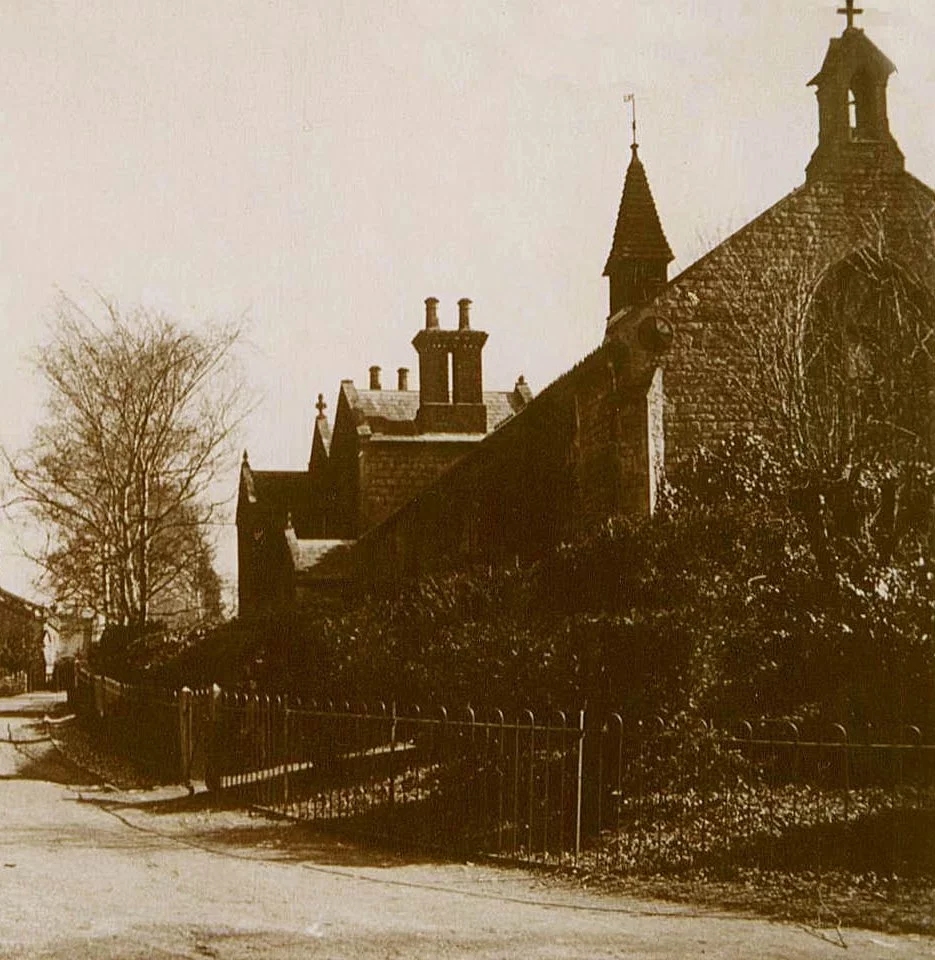
I stayed at this billet for some months and attended Calverton school until several bombs were dropped at Upper Weald one Friday evening. The next day myself and two other lads set off to Calverton to view the craters, which we did from a distance. Making our way home we all became soaked from the heavy and prolonged rain. When I arrived back at the billet there was a surprise waiting for me. My foster mother had developed pneumonia and was seriously ill. The billeting officer, a Mrs. Roach, had been sent for and she had found me a new home, not in Stratford but in Calverton at School House with a Mr. and Mrs. Tomkins both of whom had disabilities but were the kindest and most cheerful of people. I was very fortunate in having this billet.
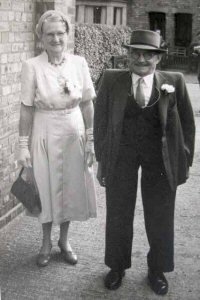
The next day Mrs. Roach walked me to Calverton and there we stood at the front door of School House. Mrs. Tomkins soon answered; she had a round kindly face and hair a mix of silver and gold. ” Come in, boy” she said taking me in and removing my soaked clothes. Next, she led me to the living room and a cheerful fire with the faint scent of burning logs and flickering shadows on the walls. From this moment my friendship with the Tomkins lasted for twenty-seven years until their passing. I have much to thank them for. And that is how I came to Calverton.
Evening routine at my new home was always a pleasurable one with the choice of three games. Cards, dominoes or darts. At half time supper was laid out with large quantities of vegetables for Mr. Tomkins being a keen gardener cultivated, as he put it, “ten pole.” The star turn at supper, had to be a Spanish onion, big as a man’s fist and enough to set your throat on fire. I settled in well here.
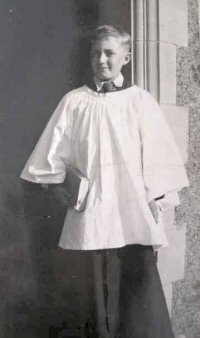
I joined the church choir in my early days at Calverton. This meant attending two services on Sundays and choir practice one evening in the week. The Reverend Raymond Bathurst Ravenscroft was the rector at the time, he was good company. In his own time he was a ghost hunter and told many an eerie story.
Mr. Tomkins maintained the churchyard in good order and was also the sexton, stoking the fires up when necessary and ringing the bells on a Sunday. Sometimes I did this for him.
Countryside pursuits
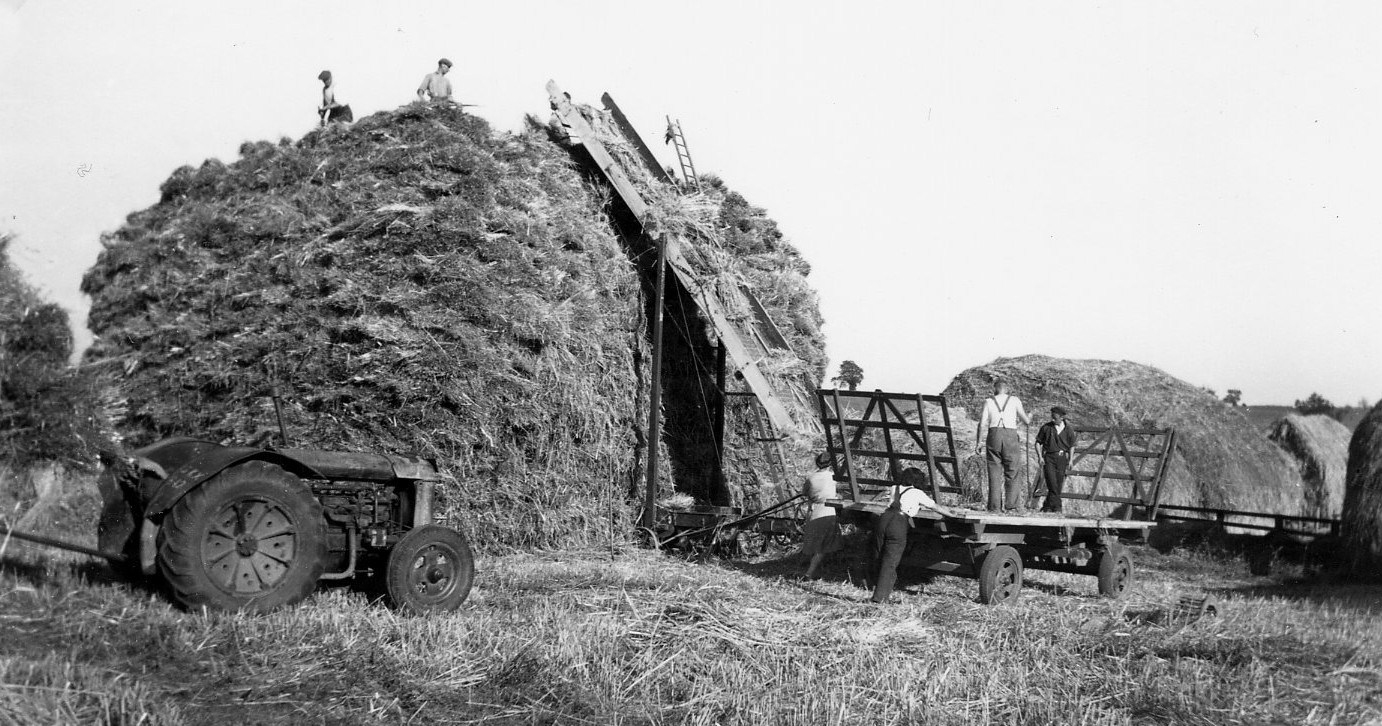
Countryside pursuits always caught the attention. At harvest time the village activity became intense in the various farms. The mowing of the different crops, wheat, barley and oats would entice sizeable numbers of the villagers to follow the reaper for a free gathering by gleaning. This then found its way to privately kept fowl destined for Christmas. The produce from the fields was carried to the rick-yard by horse-drawn wagon or tractor and then fed to the threshing-box. The elevator came next passing the straw up to the Rick to be neatly stacked. Sometimes the ricks were thatched for weather protection.
Another annual event took place about mid-summer. It was the village fete held in the rectory back garden or in the school should it be a rainy day. The takings went to the church funds. Stalls were usually present selling “sales of work” and also sideshows for amusement. I remember at one of these, a shooting gallery, a pellet fired by an air rifle rebounded from the target and landed in the rector’s mouth. Now and again a “social ” would be held in the school where some refreshments were to be had and dancing to the Three Geners Band. Grandfather, Father and Son.
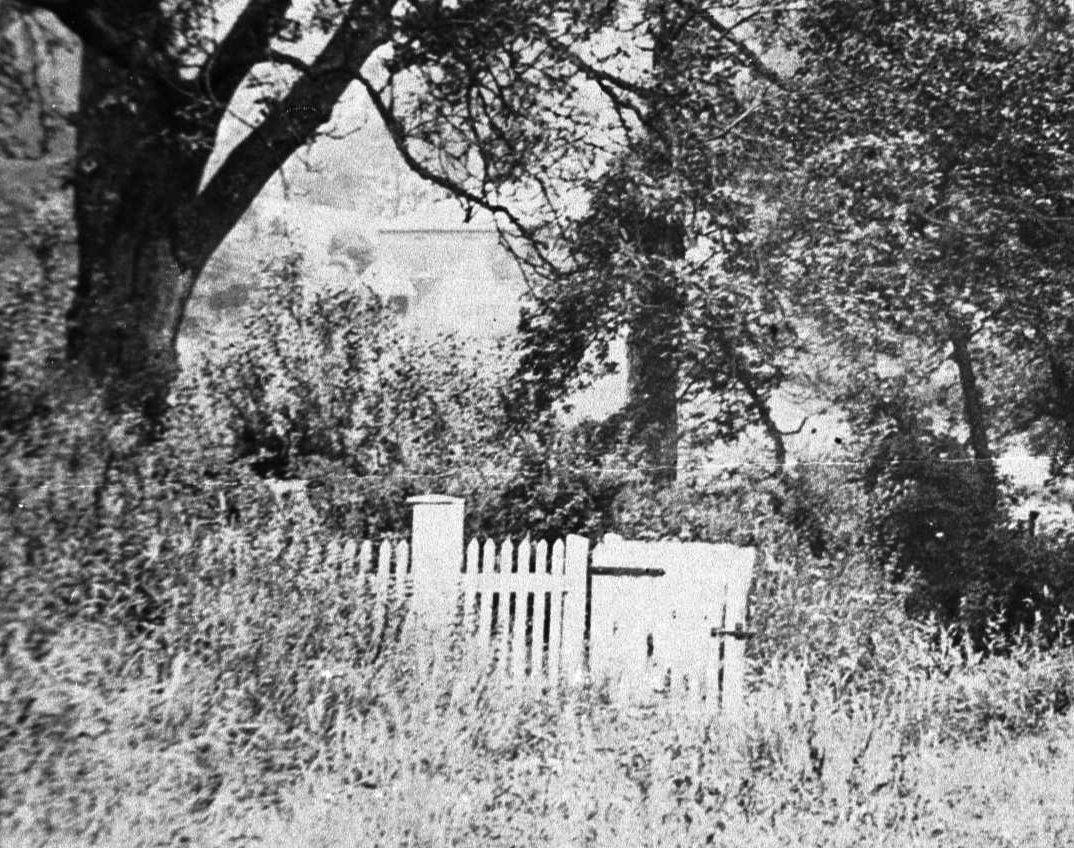
When I first came to Calverton the local water supply was by several wells. School House had its own. There stood another well half way through Lower Weald and this supplied the Tomkins. Mr. Tomkins collected water with the help of a yoke and two buckets every evening. About 1941 or 1942 mains water to the village was laid on by the Council, Mr. Tomkins became one of the workman involved. I used to visit him each day and loved to watch progress from Stony Stratford of the pipe trench. Also the laying of the pipes, some were joined by rubber seals and steel washers, others with molten lead. The mains pipes were of about 4 inches diameter.
Throughout my association with the village there was no presence of a reasonable sewage system and it may still be the same. A tank pulled round the village by a poor old horse of Steptoe vintage. The operator stopped at each house, emptied the privy into his bucket, which then was transferred to the tank. The stench nearly knocked you over. On this day of the week, during the above performance, the schoolteachers used to run for cover.
Before the war there used to be a Calverton Cricket team. Go up the hill towards Middle Weald and turn left about half way up (into Crow Piece, then George Cowley’s field). At the first hedge beyond the road hedge the team had its hut full of cricket gear although I doubt if it is still there now. On the well-marked “ridge and furrow” ground at this spot used to be their home ground.
The War comes to Calverton
There were some war experiences at Calverton. Enemy aircraft were heard from time to time with their distinctive engine sound, a low moaning warble. They were on their way to bomb the midlands. On the 14th of November 1940 my foster parents and myself went to the cinema at Stony Stratford. At the end of the performance we emerged into the street to find an air raid warning in progress. As described above German aircraft could be heard above and they continued until the early morning. On our way home a glow could be seen in the sky to the north. It was the bombing of Coventry. Mr. and Mrs. Tomkins made me a temporary bed downstairs that night under a table with cushions and blankets. They each slept in a chair one at each end of the table for my protection. It was a frightening experience.
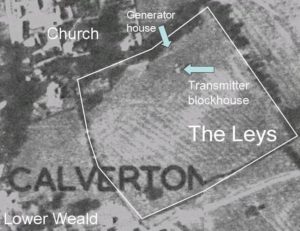
On another occasion the village was bombarded with incendiary bombs. They were heard during the night hitting the ground. Having assessed the situation we three headed towards the rectory with many other people and there were organised to fire fighting parties by the rector and his wife. I joined with a Miss. Taylor and between us we carried some sand in an old bath to the Leys where we delivered it to the menfolk fighting the fires. Eventually when the incendiaries were either overcome or burned out we returned home and had a calming cup of tea. At this point I discovered that I had departed from the house in such a hurry that I had left my footwear off! That night was a bit of a terror but people came together and did what had to be done.
There were one or two preparations to combat an enemy invasion. In the island at the junction of the road to Beachampton, a pit was dug, presumably an intended machine gun position. At the bottom of the hill to Middle Weald a large tree trunk had been installed, pivoted at one end and with a wagon wheel at the other. In the event of an invasion the trunk was to be pushed across the road to surprise any German troops proceeding apace down the hill. No doubt the Home Guard would have given the Coup de Grace.
Last of the wartime activities was the building of two radio stations, one at Lower Weald in the Leys and consisted of numerous, very high poles as aerials and another station at Upper Weald. Rumour had it at the time that they were both connected with Bletchley. It probably was so. The base of the guard hut may still exist in the Leys (it does, as do the remains of the brick-built generator shed which supplied the power to the radio transmitters – ed).
The Bowaters of Calverton Place
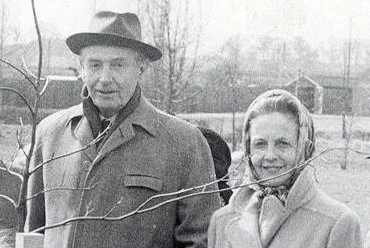
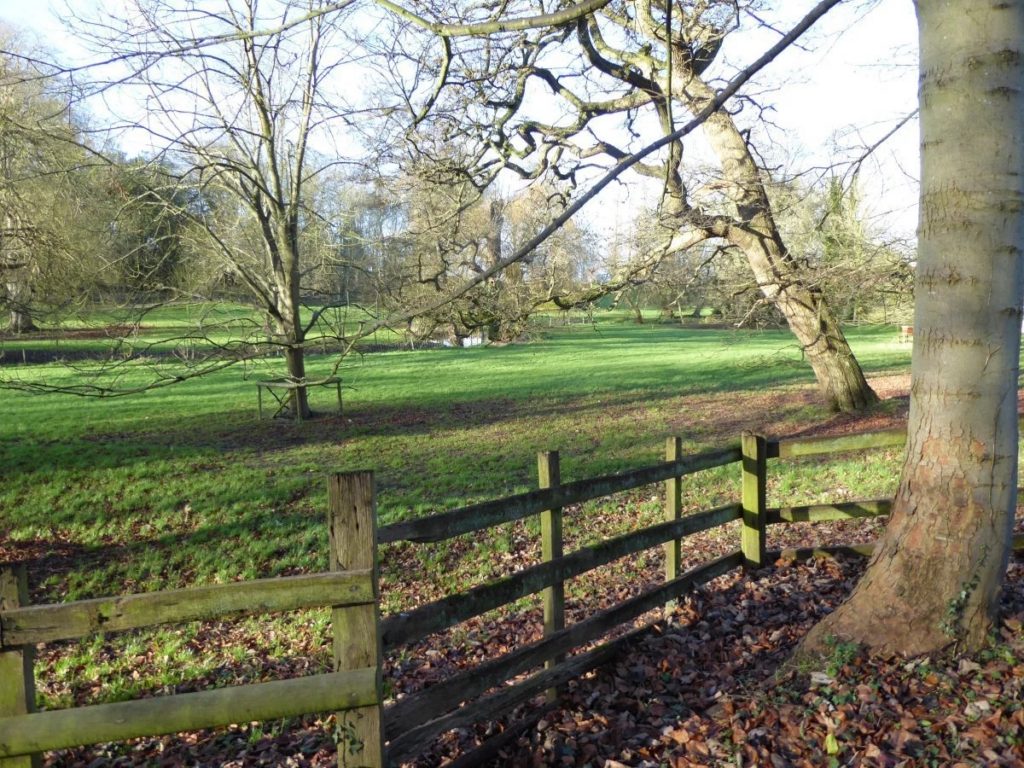
The people who owned Calverton Place, at one time or another were quite generous to the evacuees and allowed us the use as a playground of the first field on the right hand side as you enter the gate in the stonewall. At another time we children were given a party on the lawn of Calverton Place. An “egg and spoon” race was modified into a “potato and spoon” race, eggs being short at that time. But the great treat of the day was a very large tub of ice cream, something we hadn’t seen for years. Finally every child was given a half crown. One tends to remember things like this. I believe that the family who did this for us was Bowater.
The following memory is one I recall, if not with pleasure, then with respect. Playing one day with several lads in the sand pits near Watling Steet we were ejected by Farmer George Fountaine who chased us one by one and clipped us round the ear. Discipline and retribution were far simpler in those times. However, I bear no grudge.
The spring, called the Lion’s Mouth, was I think known as the Lion’s Head in my time and was always worth a visit if passing by. It used to be said that a local farmer’s wife would give a youngster a penny for a bucket of spring water from here. It never stopped supplying water years ago. It’s sad to see it dry up.
Travelling from the Lion’s Head/Mouth you come to a lone house on the right hand side (Calverton Cottage). Behind this house is smallish field. It was in this field that a victory football match was played in 1945. It was played for a cup, which I trust someone still keeps polished. I can only remember one player and that was Farmer George Fountaine.
Postscript
| The following is a list of the village people I can still remember. | ||
| Upper Weald. | Middle Weald. | Lower Weald. |
| Farmer Goss. | Roberts. | Farmer George Fountaine. |
| Davy, Mr.& Mrs. | Webb, Mr. & Mrs. and Betty, Judy, Robert, Terry. |
|
| Wilkes, Mr. & Mrs. and Joyce. | West, Mr. & Mrs. and Barbara. | |
| Knight, Mr. & Mrs. and Rositta. | Tomkins, Mr. & Mrs. | |
| West, Mr. & Mrs. | ||
| Kate Shillingford. | ||
| Alice ? and daughter. | ||
| Barker, Mr. & Mrs and Robert. | ||
I notice from the Monumental Inscriptions Survey that Doreen Alice Cowan passed on at the early age of 41. In the past we were friends, of the same age, and through the fog of my memory I recall that on occasion we would take bike rides together in the local countryside. I regret her passing. Doreen’s mother, Alice Cowan, kept the village Post Office during the war years and, if I remember correctly, for some time afterwards.
I can also add to the Monumental Inscriptions Survey the full names of Jim and Ida Tomkins. They were James Howard Tomkins died 1967 aged 79 and Ida Beatrix (x not c) Tomkins (nee Britain ?) died 1962 aged 74. (These dates are from memory).
Continuing my browsing I found a photograph of the east end of Calverton church. This reminded me of a tale told me by Rev. Ravenscroft. It seems that when the church was rebuilt in 1818 the wrong east window was delivered, it should have gone elsewhere (Passenham?) there was in fact, a swap which seems obvious by the construction at All Saints. Not many people know that.
John D .Ward (May 2005) Updated Dec 2015